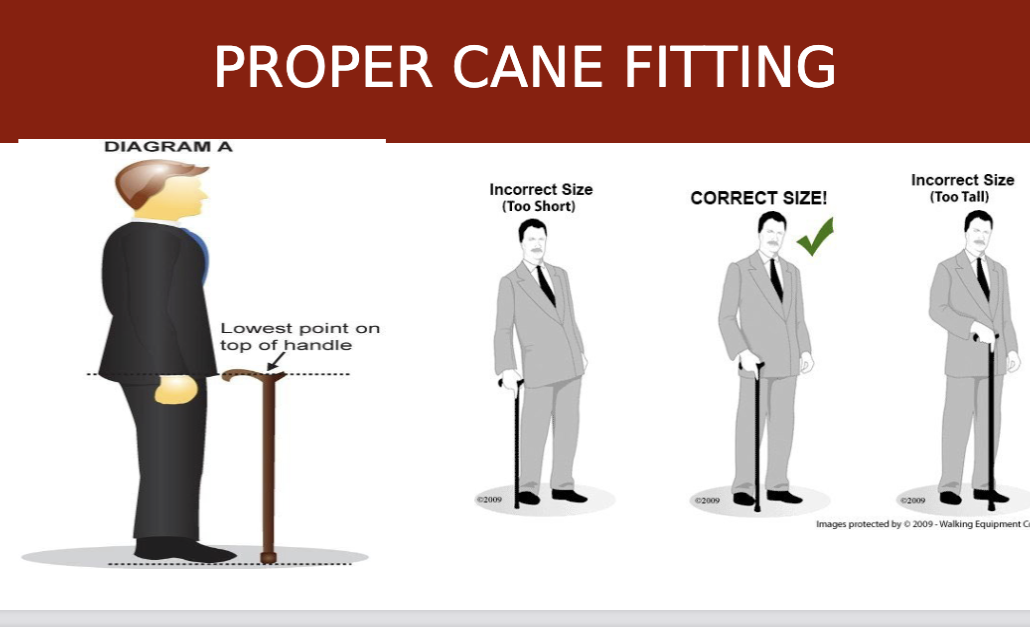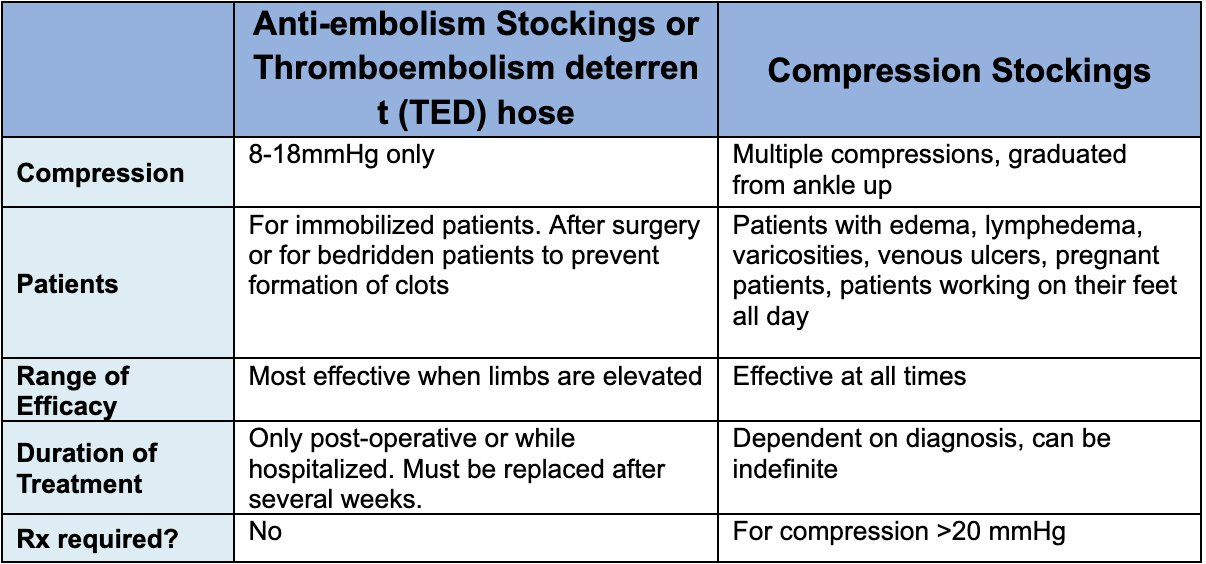Walking Aids/Compression Stockings
1/11
There's no tags or description
Looks like no tags are added yet.
Name | Mastery | Learn | Test | Matching | Spaced |
|---|
No study sessions yet.
12 Terms
When measured appropriately, what body part should be equal with the cane height?
The patient’s wrist should be level with the handle. The distance between the top of the cane to the armpit should be 2-3 fingers length max.
List two safety considerations for patients requiring mobility assistance.
The patient may fall or trip if the surfaces they are traveling on are not stable, or if the patient is improperly fitted. Another concern is that a patient may not have accessible entrances or may have trouble navigating travel.
True or False: A patient with a walker can climb stairs and use an escalator.
False. Never climb stairs or use an escalator with a walker.
What compression level is available for over-the-counter stockings?
Typically 15-20 mmHG
Compression >20 mmHg requires a RX
Who is a candidate for a cane and what considerations should be made?
Good if a patient needs minimal support
Cane follows the strike of the injured/weak leg
Use/Hold can on the strong side
What is the appropriate fitting for a cane
It should come up to the patient’s hip bone

When would a patient need a walker?
For bilateral support for pts who need moderate balance and weight support
The top of the crutches should be:
about 1-2 inches below the patient’s armpits
the patient’s elbows should be slightly bent while holding the handgrips
How do you measure for a walker
The top of the walker is at the patient’s crease in their wristW
When would a pt use anti-embolism stockings?
Immobilized patients. Typically after surgery or for bedridden patients to prevent formation of clots. Most effective when limbs are elevated. Treatment is typically post-operative or while hospitalized.

When would a patient use compression stockings?
Patients with edema, lymphedema, varicosities, venous ulcers, pregnant patients, patients working on their feet all day
Effective at all times
Duration can be indefinite
RX required for compression >20 mmHg